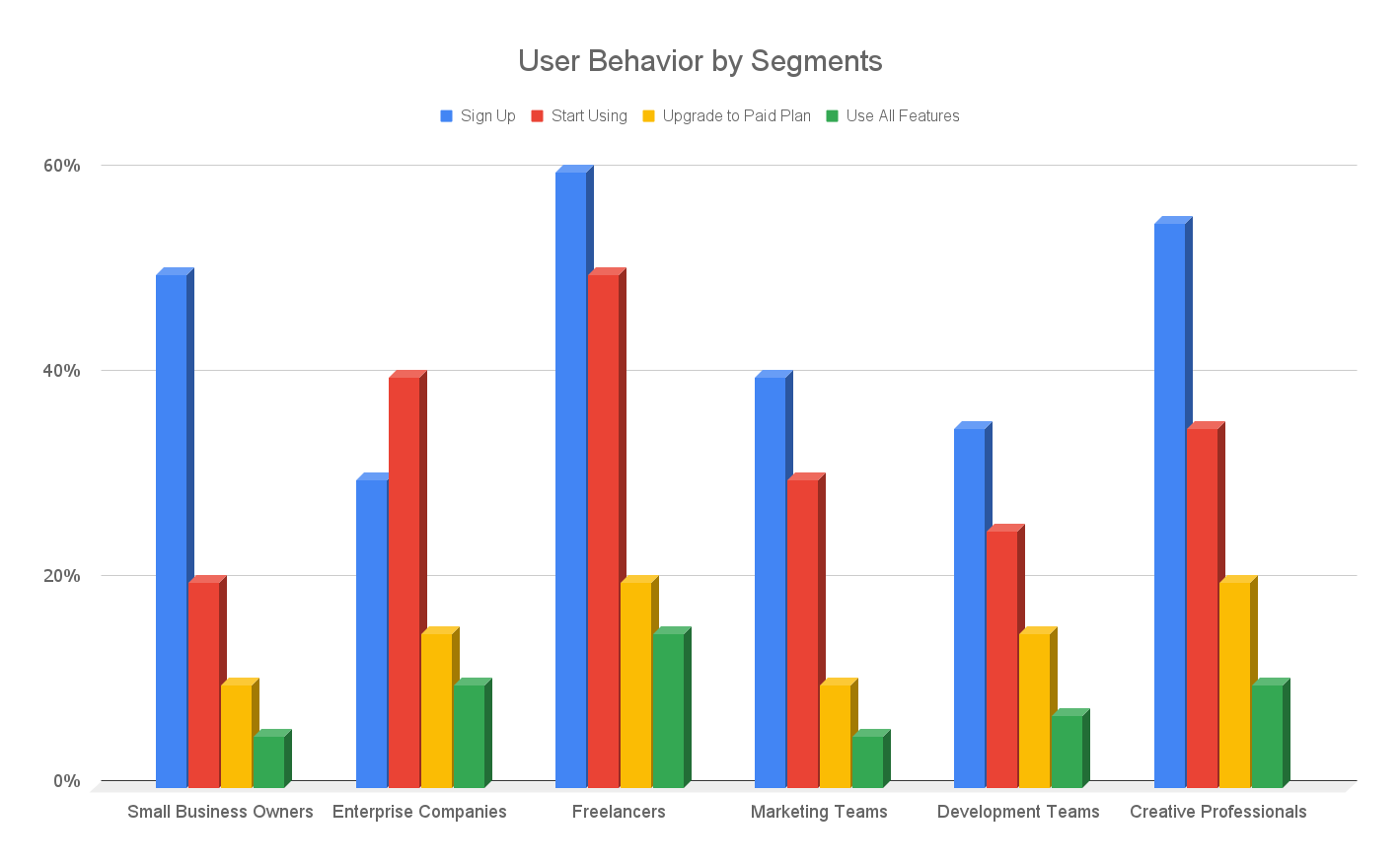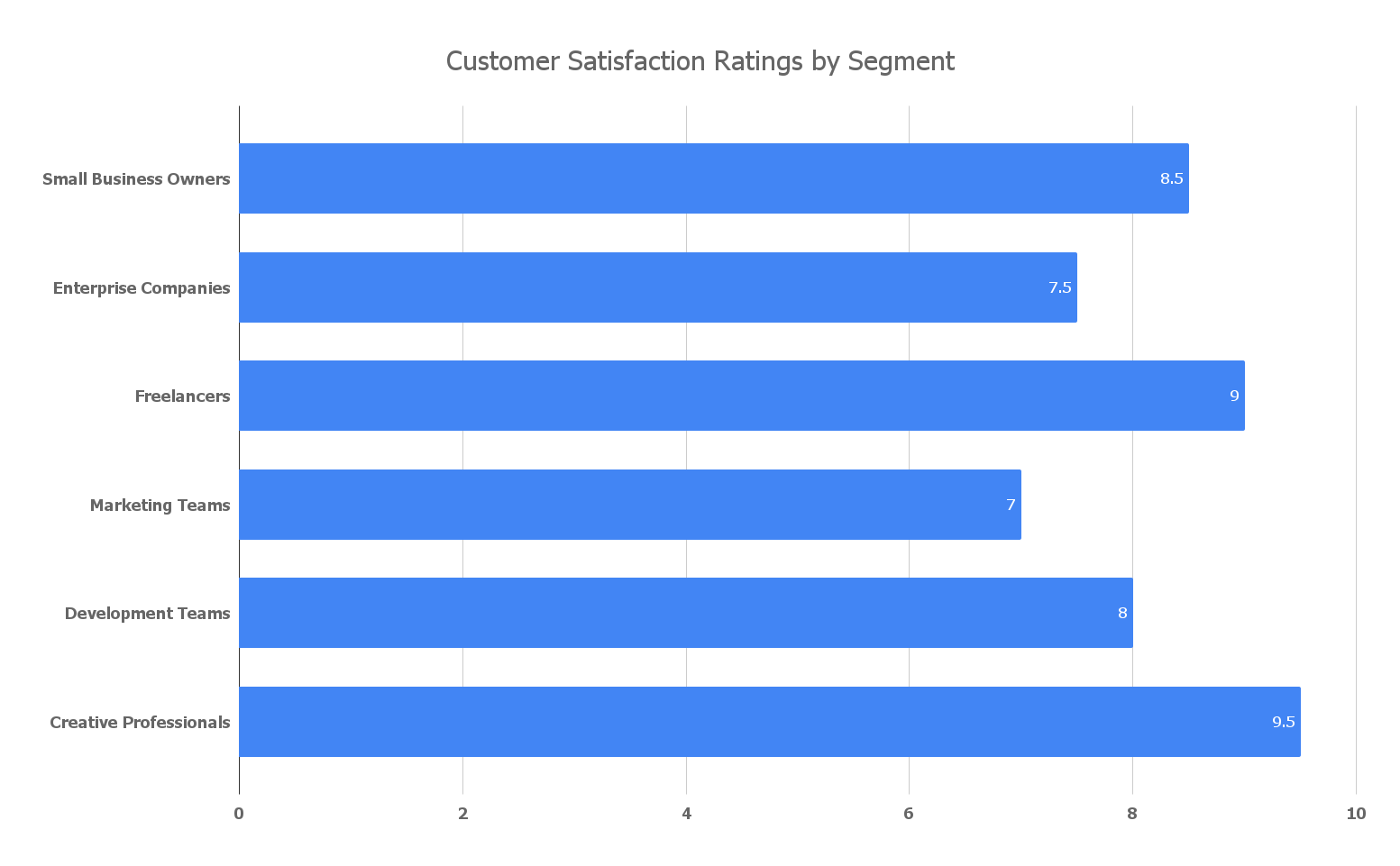"By breaking down your audience into smaller, more targeted segments, you can create campaigns that feel like they were made just for that user. That's the power of micro-segmentation."
Are you tired of sending generic marketing messages that don't seem to resonate with your audience? Are you struggling to find the right approach to engage your customers and increase your conversions? If so, micro-segmentation might just be the magic solution you've been looking for.
As a SaaS marketer, you know that personalized marketing is essential to attract and retain customers. But achieving hyper-personalization can be a challenge. That's where micro-segmentation comes in. It allows you to break down your audience into smaller, more targeted groups based on shared characteristics or behaviors. This technique is like a superpower for SaaS marketers. It enables you to create campaigns that speak directly to the needs and pain points of your audience, making your marketing messages feel like they were made just for them.
So, how can you implement micro-segmentation in your SaaS marketing strategy? Let's take a closer look at each step.
What is Micro-Segmentation?
At its core, micro-segmentation is the process of dividing your audience into small, highly targeted segments based on shared characteristics or behaviors. These segments can be as broad or as narrow as you like, but the more specific they are, the better you can tailor your marketing messages to them.
For example, let's say you run a project management SaaS product. You might start by segmenting your audience into broad categories based on job title or company size. But that's just the beginning. Within those categories, you can create micro-segments based on more specific criteria, such as:
- Users who have signed up but not yet started using your product
- Users who have used your product for a certain period of time but have not yet upgraded to a paid plan
- Users who have upgraded to a paid plan but are not using certain features
By breaking down your audience into these smaller segments, you can create marketing campaigns that speak directly to their needs and pain points.

Why Micro-Segmentation Works
There are several reasons why micro-segmentation is such a powerful marketing technique:
1. Increased Personalization
The more targeted your marketing messages are, the more personalized they feel to your audience. By using micro-segmentation, you can create campaigns that feel like they were made just for that individual user. This can lead to higher engagement rates, more conversions, and increased customer loyalty.
2. Better Targeting
When you create broad marketing campaigns, you're essentially casting a wide net and hoping to catch some fish. But with micro-segmentation, you can identify the exact pain points and needs of each segment and create campaigns that address those specific issues. This leads to more targeted marketing messages that are more likely to resonate with your audience.
3. Increased ROI
Because micro-segmentation allows you to create highly targeted campaigns, you're more likely to see a higher return on investment (ROI) for your marketing efforts. By focusing your resources on the segments that are most likely to convert, you can maximize your marketing budget and achieve better results.

How to Implement Micro-Segmentation
Now that you understand the power of micro-segmentation, it's time to start implementing it in your SaaS marketing strategy. Here are some steps you can take to get started:
1. Define Your Segments
The first step in implementing micro-segmentation is to define your segments. As we mentioned earlier, these can be as broad or as narrow as you like, but the more specific they are, the better you can tailor your marketing messages to them. Here are some criteria you might use to define your segments:
- Job title
- Company size
- Industry
- Geographical location
- Age
- Gender
- Buying behavior
- User behavior
Once you've defined your segments, you can start creating targeted marketing campaigns for each one.
2. Use Data to Identify Pain Points and Needs
The next step is to use data to identify the pain points and needs of each segment. This might involve analyzing user behavior, conducting surveys, or using tools like heatmaps and session recordings to understand how users interact with your product. The more data you have, the better you can understand the needs of each segment.
For example, let's say you've identified a segment of users who have signed up for your SaaS product but haven't started using it. By analyzing their behavior, you might discover that they're getting stuck during the onboarding process or that they're overwhelmed by the number of features available. Armed with this knowledge, you can create a targeted campaign that addresses their specific pain points and encourages them to start using your product.
3. Create Targeted Campaigns
Once you've defined your segments and identified their pain points and needs, it's time to create targeted marketing campaigns for each one. This might involve creating personalized email campaigns, targeted social media ads, or customized landing pages that speak directly to the needs of each segment.
For example, let's say you've identified a segment of users who have upgraded to a paid plan but are not using certain features. You might create a targeted email campaign that highlights the benefits of those features and offers tips and tricks for using them effectively. By addressing their specific needs, you're more likely to encourage them to use those features and see the value in your product.
4. Test and Iterate
As with any marketing strategy, it's important to test and iterate your micro-segmentation campaigns to ensure they're delivering the results you want. This might involve A/B testing different email subject lines, trying out different ad copy, or experimenting with different landing page designs.
By testing and iterating your campaigns, you can learn what works best for each segment and continually improve your marketing efforts.
Best Practices for Micro-Segmentation
To make the most of micro-segmentation, it's important to follow some best practices:
1. Start with Broad Segments
While micro-segmentation is all about breaking down your audience into smaller, more targeted segments, it's important to start with broad segments and then narrow down as needed. This allows you to get a sense of the overall characteristics and behaviors of your audience before diving into more specific segments.
2. Use Multiple Criteria to Define Segments
To create truly targeted campaigns, it's important to use multiple criteria to define your segments. For example, you might define a segment based on job title, industry, and user behavior. The more criteria you use, the better you can tailor your campaigns to the needs of each segment.
3. Use Personalization Tools
To make your micro-segmentation campaigns even more effective, consider using personalization tools like dynamic content or personalized landing pages. These tools allow you to create campaigns that feel even more targeted and personalized to each individual user.
4. Continually Refine Your Segments
As your audience changes and evolves, it's important to continually refine your segments to ensure they're still relevant and effective. This might involve adding new criteria, removing old ones, or creating entirely new segments based on changing user behavior.
Micro-segmentation is a powerful marketing technique that allows you to create highly targeted campaigns that resonate with individual users.
By breaking down your audience into smaller segments based on shared characteristics or behaviors, you can create campaigns that feel like they were made just for that user.
To make the most of micro-segmentation, start by defining your segments, using data to identify pain points and needs, and creating targeted campaigns for each segment. And remember to continually refine and iterate your campaigns to ensure they're delivering the results you want.
FAQ
1. What is micro-segmentation, and how is it different from traditional segmentation?
Micro-segmentation is a marketing technique that involves breaking down your audience into smaller, more targeted groups based on shared characteristics or behaviors. This technique is different from traditional segmentation because it allows you to create highly specific segments that are more tailored to the needs and behaviors of your audience.
2. Why is micro-segmentation important for SaaS marketers?
Micro-segmentation is important for SaaS marketers because it allows them to create highly targeted campaigns that resonate with individual users. By breaking down your audience into smaller segments based on shared characteristics or behaviors, you can create campaigns that feel like they were made just for that user. This can lead to increased engagement, conversions, and customer loyalty.
3. How do you define your segments for micro-segmentation?
To define your segments for micro-segmentation, start with broad categories based on job title or company size, and then break them down into more specific micro-segments. The more targeted your segments are, the better you can tailor your marketing messages to them. Use multiple criteria to define your segments, such as job title, industry, or user behavior.
4. How do you identify the pain points and needs of each segment?
To identify the pain points and needs of each segment, you can use data analysis techniques such as analyzing user behavior, conducting surveys, or using tools like heatmaps and session recordings. By understanding the needs of each segment, you can create marketing campaigns that address their specific pain points and encourage them to engage with your product.
5. How do you create targeted marketing campaigns for each segment?
To create targeted marketing campaigns for each segment, you might create personalized email campaigns, targeted social media ads, or customized landing pages that speak directly to the needs of each segment. By addressing the specific needs of each segment, you're more likely to encourage them to engage with your product and see the value in it.
6. What are some best practices for micro-segmentation?
Some best practices for micro-segmentation include starting with broad segments and then narrowing them down as needed, using multiple criteria to define your segments, using personalization tools like dynamic content or personalized landing pages, and continually refining and iterating your segments based on feedback and results.
7. How do you test and iterate your micro-segmentation campaigns?
To test and iterate your micro-segmentation campaigns, you might A/B test different email subject lines, try out different ad copy, or experiment with different landing page designs. The key is to continually refine and improve your micro-segmentation campaigns to achieve the best results.
8. How can you measure the ROI of your micro-segmentation campaigns?
To measure the ROI of your micro-segmentation campaigns, you can track metrics like conversion rates, customer lifetime value, and customer satisfaction ratings for each segment. This can help you understand the financial impact of your marketing efforts and where you should allocate your marketing budget.
9. How can you use micro-segmentation to improve customer retention?
You can use micro-segmentation to improve customer retention by identifying segments of customers who are at risk of churning and creating targeted campaigns to re-engage them. By addressing their specific pain points and needs, you're more likely to keep them as loyal customers.
10. What are some common mistakes to avoid when implementing micro-segmentation?
Some common mistakes to avoid when implementing micro-segmentation include starting with too narrow of segments, using too few criteria to define your segments, not using personalization tools like dynamic content, failing to test and iterate your campaigns, and not measuring the ROI of your micro-segmentation efforts. It's also important to continually refine and iterate your segments to ensure they're still relevant and effective for your audience.






